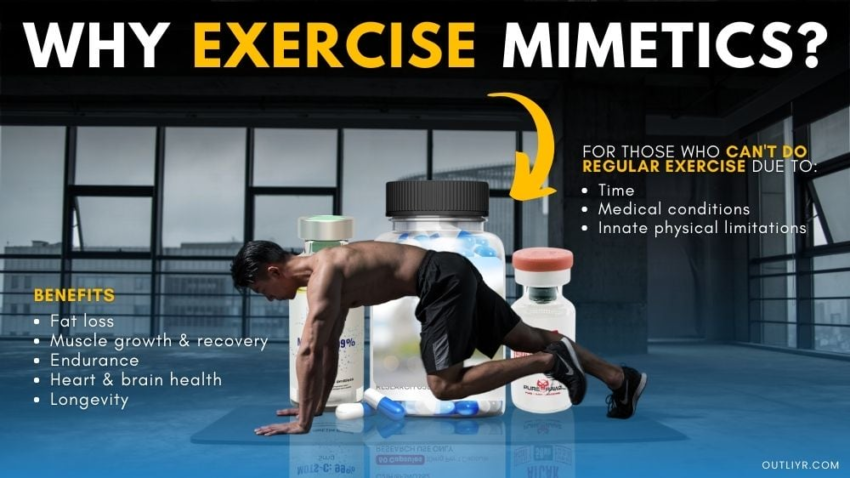Exercise is widely considered among the highest-impact health optimization tools on Earth.
It activates more biological wellness pathways (and to a greater degree) than just about anything.
Imagine a world in which you could get all the benefits of exercise but in a pill.
Of course, if you enjoy working out, you could continue your usual routine. Even then, that same pill might amplify the benefits of your workout.
While it’s currently mostly science fiction, every day scientists inch us closer to this reality.
This class of therapeutics is called “exercise mimetics”. They’re mostly supplements, drugs, and ingredients, but certain lifestyle practices fit in these criteria too.
Today, I’m sharing some of the most promising exercise mimetics available and currently undergoing research. Bookmark this page, as I plan to update it as I discover more.
Understanding Exercise Mimetics
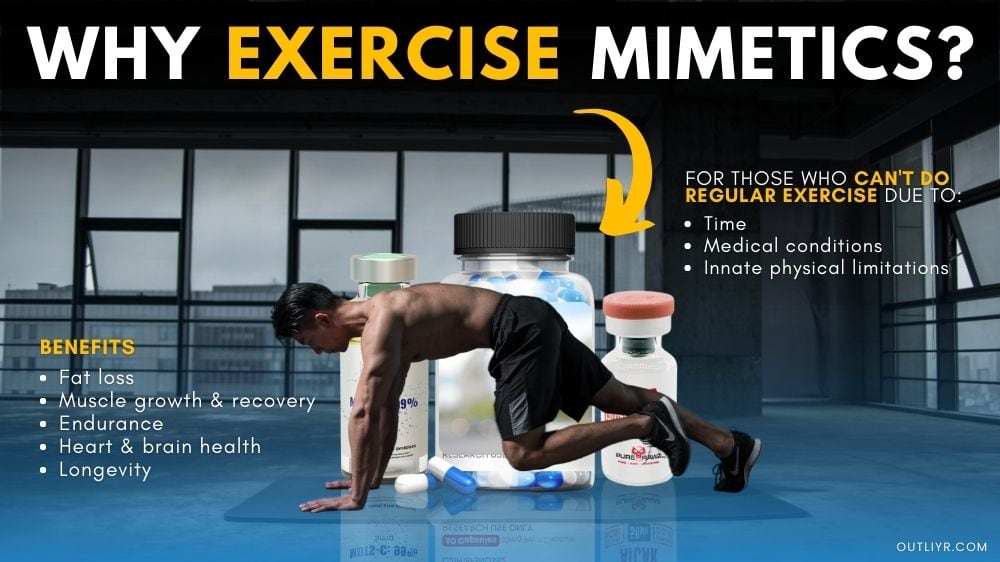
Exercise mimetics are compounds or interventions designed to replicate the beneficial effects of physical exercise without requiring actual physical activity.
These compounds work by activating biochemical pathways and physiological responses similar to those triggered by exercise, such as increased mitochondrial biogenesis, improved insulin sensitivity, and enhanced fat oxidation.
Unlike traditional exercise, which involves activities like running or weightlifting, exercise mimetics achieve similar outcomes pharmacologically Share on X
This can be particularly useful for people who cannot engage in regular exercise because of medical conditions, physical limitations, or time constraints.
Or for biohackers that want to maximize the impact of their training sessions.
Some of the many mechanisms exercise mimetics use to exert their benefits include:
- Activation of AMPK: AMPK acts as an energy sensor in cells, promoting glucose uptake, fatty acid oxidation, and mitochondrial biogenesis to enhance energy availability
- Upregulation of PGC-1α: PGC-1α regulates mitochondrial biogenesis and function, increasing mitochondrial density and improving oxidative metabolism to enhance endurance and muscle performance
- Inhibition of Myostatin: Inhibiting myostatin, a negative regulator of muscle growth, leads to increased muscle mass and strength
- Activation of SIRT1: SIRT1 is involved in cellular stress responses and metabolic regulation, enhancing insulin sensitivity, mitochondrial function, and promoting longevity
- Stimulation of IGF-1 Pathway: IGF-1 promotes muscle hypertrophy and regeneration, crucial for muscle growth and repair
- Enhancement of mTOR Signaling: mTOR regulates cell growth and protein synthesis, increasing muscle protein synthesis and growth
- Increase in NO (Nitric Oxide) Production: NO improves blood flow by acting as a vasodilator, enhancing nutrient delivery to muscles and supporting cardiovascular health
- Activation of UCP1: UCP1 is involved in thermogenesis and energy expenditure, increasing fat burning and reducing adiposity by dissipating energy as heat
- Regulation of FOXO Transcription Factors: FOXO factors regulate oxidative stress responses and apoptosis, enhancing cellular repair mechanisms and resilience to stress
- Modulation of NF-κB: NF-κB is involved in inflammatory responses, reducing inflammation and improving muscle recovery and overall health
Expect this list to grow as researchers are constantly uncovering new mechanisms of exercise.
Benefits of exercise mimetics
While no molecules or therapies yet replicate all the benefits of exercise, they can still dramatically impact your health.
Some of the top benefits of exercise mimetics include:
- Muscle Growth: Increase muscle mass and strength through pathways like IGF-1, growth hormone, and inhibition of myostatin
- Fat Loss: Enhance fat burning and reduce adiposity by activating mechanisms like UCP1, PPAR gamma, and AMPK
- Improved Cardiovascular Health: Improve endothelial function, increasing NO production, and reducing inflammation
- Enhanced Brainpower: Boost cognitive abilities and support neurogenesis through mechanisms like SIRT1 activation and PGC-1α upregulation
- Increased Endurance: Improve stamina and endurance by enhancing mitochondrial biogenesis and oxidative metabolism
- Better Insulin Sensitivity: Improve insulin sensitivity and glucose metabolism through pathways involving AMPK and SIRT1
- Enhanced Muscle Recovery: Aid muscle repair and recovery by modulating NF-κB and promoting protein synthesis via mTOR signaling
- Longevity Support: Promote longevity and healthy aging by enhancing metabolic regulation and cellular stress responses through factors like SIRT1
- Reduced Inflammation: Lower chronic inflammation, aiding overall health and recovery, through modulation of NF-κB
- Thermogenesis and Energy Expenditure: Increase energy expenditure and thermogenesis, contributing to weight management, through activation of UCP1
So, what substances qualify as exercise mimetics?
Molecular Exercise Mimetic Compounds
Molecular exercise mimetic compounds are substances designed to mimic the beneficial effects of physical exercise at a molecular level.
Many are still largely in the research phase and are being studied for their potential to help with conditions like obesity, muscle wasting, and metabolic disorders
SLU-PP-332

SLU-PP-332 is a hot and potent exercise mimetic drug showing promising results for enhancing fat loss, energy, and and athletic performance.
Leading many researchers and biohackers to call SLU-PP-332 (”SLOOP”) the Holy Grail of fat loss and energy boosting.
Researchers at the Washington University School of Medicine in St. Louis hypothesize that it works by activating estrogen-related receptors (ERRα, ERRβ, and ERRγ) responsible for key metabolic pathways in tissues with high-energy demands.
Benefits appear to include improved:
- Endurance
- Fatigue-resistance
- Metabolic rate
At least in animals.
A study of obese mice using SLU-PP-332 found miraculous results.
Compared to untreated mice, they gained 10x less fat and lost 12% of their body weight. Plus, it boosted their endurance, aiding mice to run nearly 50% further than previously [R].
Human research is currently sparse, but this small molecule’s already taking the fitness world by storm.
MOTS-c
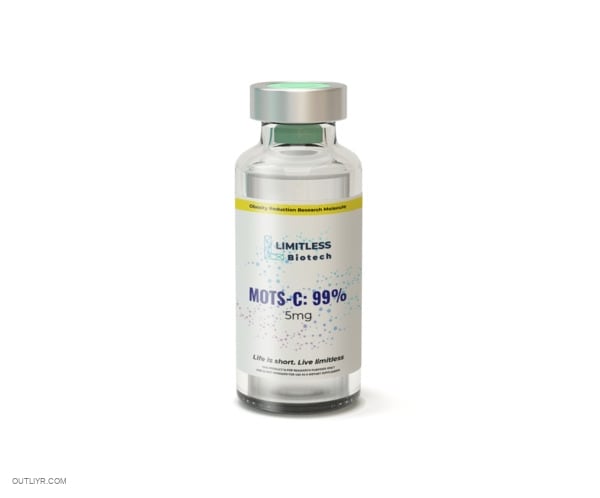
MOTS-c is a mitochondrial-encoded therapeutic peptide that inhibits the methionine-folate cycle and increases PGC-1alpha.
MOTS-c is used to:
- Reduce obesity
- Address insulin resistance
- Enhance sports performance
- Boost energy
It’s considered one of the best peptides for fat loss. Scientists are still uncovering all the benefits. It may have an anti-aging role too.
Some long-lived Japanese populations show a link between MOTS-c levels and lifespan.
This is one of my favorite peptides for a healthy, sustained energy boost. Since it’s quite unstable, I don’t recommend it to beginners.
GW501516 (Cardarine)
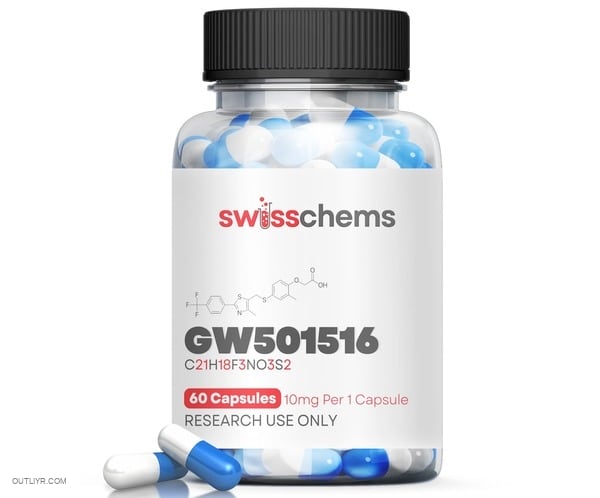
Cardarine (GW501516) enhances your body’s fat burning, energy expenditure, and even muscle mass.
It works by activating PPARδ, shifting your body’s metabolism towards using more fatty acid and improving endurance performance.
Cardarine’s been studied for its potential to aid metabolic health and reduce obesity. More notably, however, is its history of abuse in sports.
While it’s certainly powerful, pharmaceutical companies developing the drug ditched it because of potentially serious side effects.
Do thorough research and weigh the pros and cons before ordering this one.
SR9009 (Stenabolic)

Stenabolic (SR9009) helps regulate circadian rhythms and mitochondrial function. Leading to greater mitochondrial activity and energy production.
Stenabolic works by activating Rev-ErbA proteins, and improves endurance and reduces fat mass. At least, in pre-clinical studies.
This one’s also been around for a while and has made a name for itself in the performance enhancement community.
Benefits include increased metabolic rate and health, greater exercise capacity, reduced body fat.
Like AICAR, SR9009’s banned by many sports organizations for performance enhancement. As you might expect, there’s limited human clinical safety data on this one.
L-BAIBA
Mitoburn® (L-beta-aminoisobutyric acid or L-BAIBA) is a naturally occurring amino acid derivative with a plethora of impressive exercise mimetic effects.
Some of them include:
- Activating AMPK
- Increasing metabolic rate
- Increasing the burning of fat
- Aiding the production of appetite-suppressing ketones
- Assisting the browning of white fat
- Supporting leptin (fullness hormone) levels
- Helping insulin resistance
Perhaps best of all, research so far has found this molecule quite safe.
You can consume L-BAIBA in small amounts in certain foods (meat and dairy products and other high-protein foods).
O.E.A
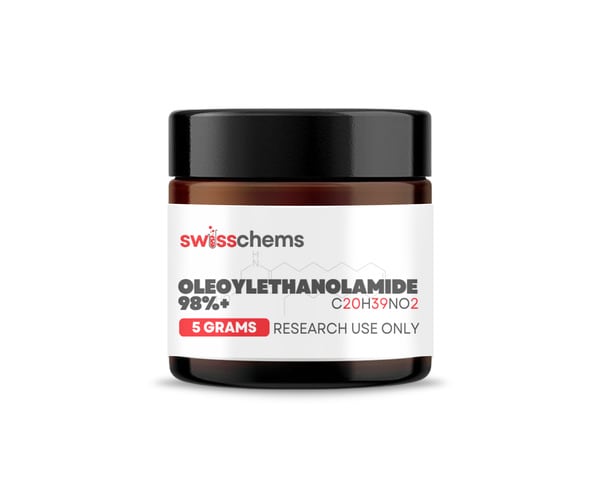
Oleoylethanolamide (O.E.A) is a naturally occurring fatty acid derivative known for its role in appetite regulation and metabolism.
This compound is synthesized in the body from oleic acid (olive oil is a great source).
By acting as a signaling molecule, O.E.A helps communicate with the brain to indicate fullness, reducing hunger and food intake Share on X
O.E.A works by activating PPAR-α, which helps lipid metabolism and energy homeostasis.
When activated, PPAR-α enhances the body’s ability to oxidize fatty acids, leading to increased energy expenditure and burning fat for fuel.
Research also suggests O.E.A influences:
It even increases levels of the “bliss molecule” anandamide. This isn’t one of the strongest exercise mimetics but it’s also a fasting mimetic.
PQQ
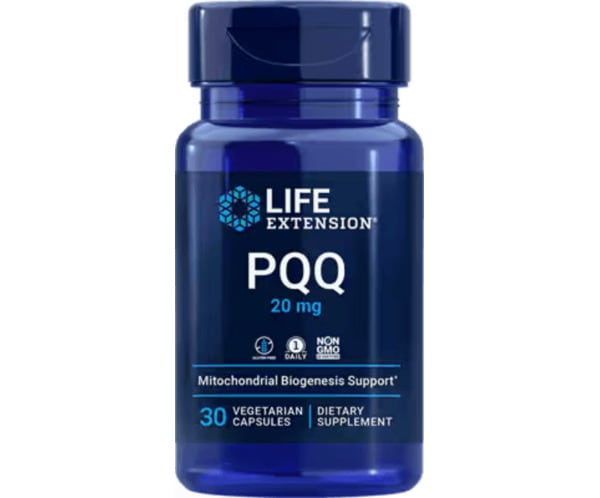
PQQ (Pyrroloquinoline Quinone) is a small molecule redox cofactor that enhances mitochondria.
PQQ works by increasing the number and function of mitochondrial and by activating PGC-1α.
Overall, enhancing energy production and endurance while also having a slight antioxidant effect to reduce oxidative stress.
PQQ also appears to benefit:
- Cognition
- Heart health
- Glucose metabolism
- Insulin sensitivity
You can get trace amounts from foods like fermented soybeans, green peppers, kiwi, and spinach. But supplementation is considered the top source.
Unlike many substances on this list, PQQ is quite safe.
Epicatechin & Epigallocatechin Gallate (EGCG)
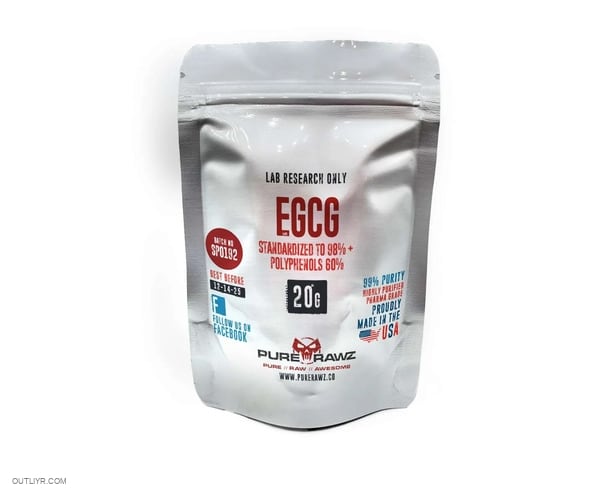
Epicatechin is a powerful flavonoid antioxidant that promotes muscle hypertrophy, stamina, and healthy inflammation.
The exercise mimetic effects come primarily from inhibiting a protein called myostatin. Myostatin limits muscle growth, so reducing it via epicatechin results in greater growth.
It also supports optimal, mitochondrial function, and has strong antioxidant properties. Resulting in greater post exercise recovery.
Epicatechin naturally occurs in foods like:
- Dark chocolate
- Green tea
- Apples
- Red wine
This substance is quite safe, not banned, but has a weaker magnitude of effect compared to some others.
Urolithin-A
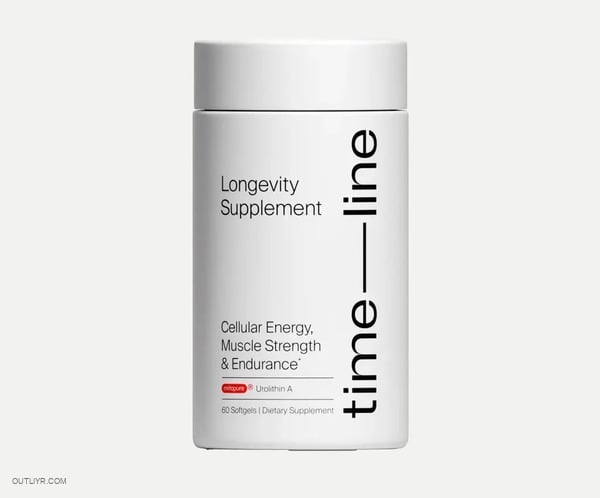
Urolithin-A is a natural postbiotic metabolite known for enhancing mitochondrial function and repair (mitophagy).
By improving mitochondrial health, urolithin-A potentially increases energy levels and physical performance. It also appears to improve cellular health and promote longevity.
When you consume foods like pomegranates and berries, your gut microbes can produce urolithin-A from ellagitannins.
Although many people lack these bacteria and must use one of these top urolithin-A supplements instead.
Again, this is one of the weaker natural exercise mimetics, but it appears to become more promising later in life.
Other substances
If you found these interesting, consider several other advanced exercise mimetics.
These include:
- Berberine
- Resveratrol
- NAD+
- Beta-hydroxybutyrate (BHB)
- Metformin
- Salicylate
- Compound 14
- ZLN005
- Beta-Guanidinopropionic Acid (β-GPA)
They range from popularly used off-label drugs, to natural substances, to designer molecules.
Exercise Mimetic Technologies & Therapies
If you don’t want to take any substances, there are also many technologies, devices, and therapies that can be just as effective as exercise mimetics.
Fortunately, most of these are now more easily accessible today as well.
Cold therapy
Cold therapy, also known as cryotherapy or cold thermogenesis, involves deliberating exposing your body to cold temperatures.
Leading to the well-known benefits of reducing inflammation, pain, and muscle soreness.
As an exercise mimetic, it appears to increase your metabolic rate, stimulate the burning of brown adipose tissue (body fat), improve circulation, and influence hormones.
By stimulating brown adipose tissue (BAT), cold therapy increase PGC-1a. Helping increase mitochondrial activity and body heat production.
Sauna
On the other end of the spectrum, the sauna is the most popular form of heat therapy.
Any sauna-goer will tell you that this therapy viscerally replicates some of the benefits of exercise Share on X
Enhancing cardiovascular function by increasing heart rate and improving blood flow, to increasing levels of feel-good chemicals like beta-endorphins are some notable ones.
Saunas are also known for:
- Stimulating production of cell protective heat shock proteins
- Natural detox
- Metabolic benefits like improved insulin sensitivity
Getting one of these quality at-home infrared saunas makes this practice super convenient and effective. I use the sauna 3-5X weekly.
EMS
Electrical muscle stimulation is a technology that applies electrical currents to muscles, causing contractions like those occurring during normal exercise.
EMS is often used for rehabilitation, muscle recovery, and strength training. It can be used to:
- Improve muscle tone
- Blood circulation
- Muscle soreness
Since you can complete grueling muscle-building strength or power workouts using EMS devices, calling it an exercise mimetic machine might be a stretch.
But if you turn the intensity way down, you can simulate training and many of the associated benefits.
The low-impact nature of EMS makes it suitable for those with poor mobility or injuries.
Whole-body vibration (WBV)
Whole-body vibration machines deliver vibrations throughout the body while you stand (or exercise) on the platform.
These devices can simulate the effects of high-intensity exercise by causing rapid, involuntary muscle contractions, activating large muscle groups simultaneously.
WBV improves not only muscle strength, flexibility, and balance, but also bone density, blood flow, balance, and coordination.
Plus, it can increase total energy expenditure. Leading to some weight loss.
Many of the devices do little to nothing for you. If you choose to go this route, choose one of these top whole body vibration machines.
HBOT
Hyperbaric oxygen therapy (HBOT) involves breathing pure oxygen in a pressurized room or chamber.
Proponents use this therapy to increase oxygen intake in the body.
Increased oxygenation through HBOT mimics the cellular metabolism and energy production boost of aerobic exercise Share on X
HBOT also appears to:
- Bolster immune response
- Improve cognitive function and protect against neurological damage
- Support cardiovascular health
- Promote recovery; and more
This therapy is pricey and harder to find, and wouldn’t be one of my first approaches to mimic the benefits of exercise.
Suitable Alternatives to Exercise?
Nothing really beats the good old exercise & fitness.
Even with state-of-the-art science, currently, we don’t have any perfect substitutes for exercise.
A tragedy, considering it’s widely considered the highest impact health hack. Exercise upgrades human biology in countless ways and mechanisms. Many of which we still don’t understand.
But there’s an entire field of study called biomimicry. In this case, exercise biomimicry.
Whether you’re short on time, injured and unable to move, or just want to amplify the benefits of your session, exercise mimetics can help
Five of the most promising exercise mimickers include:
- SLU-PP-332
- MOTS-c
- L-BAIBA
- Sauna therapy
- Whole body vibration
Each of these things can make a noticeable difference, but I’m still looking for the elusive “exercise in a pill”.
If you’ve found anything else that I’m missing, drop a comment below and let me know!

